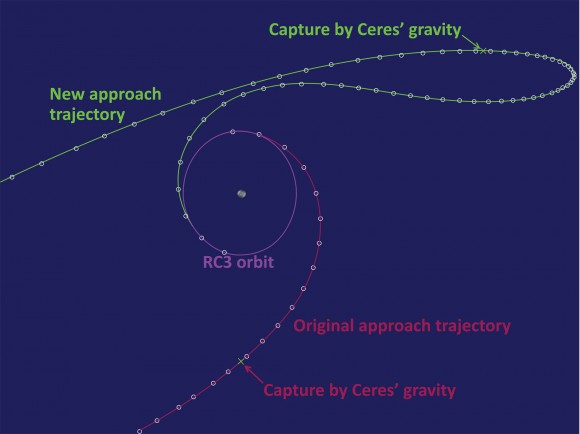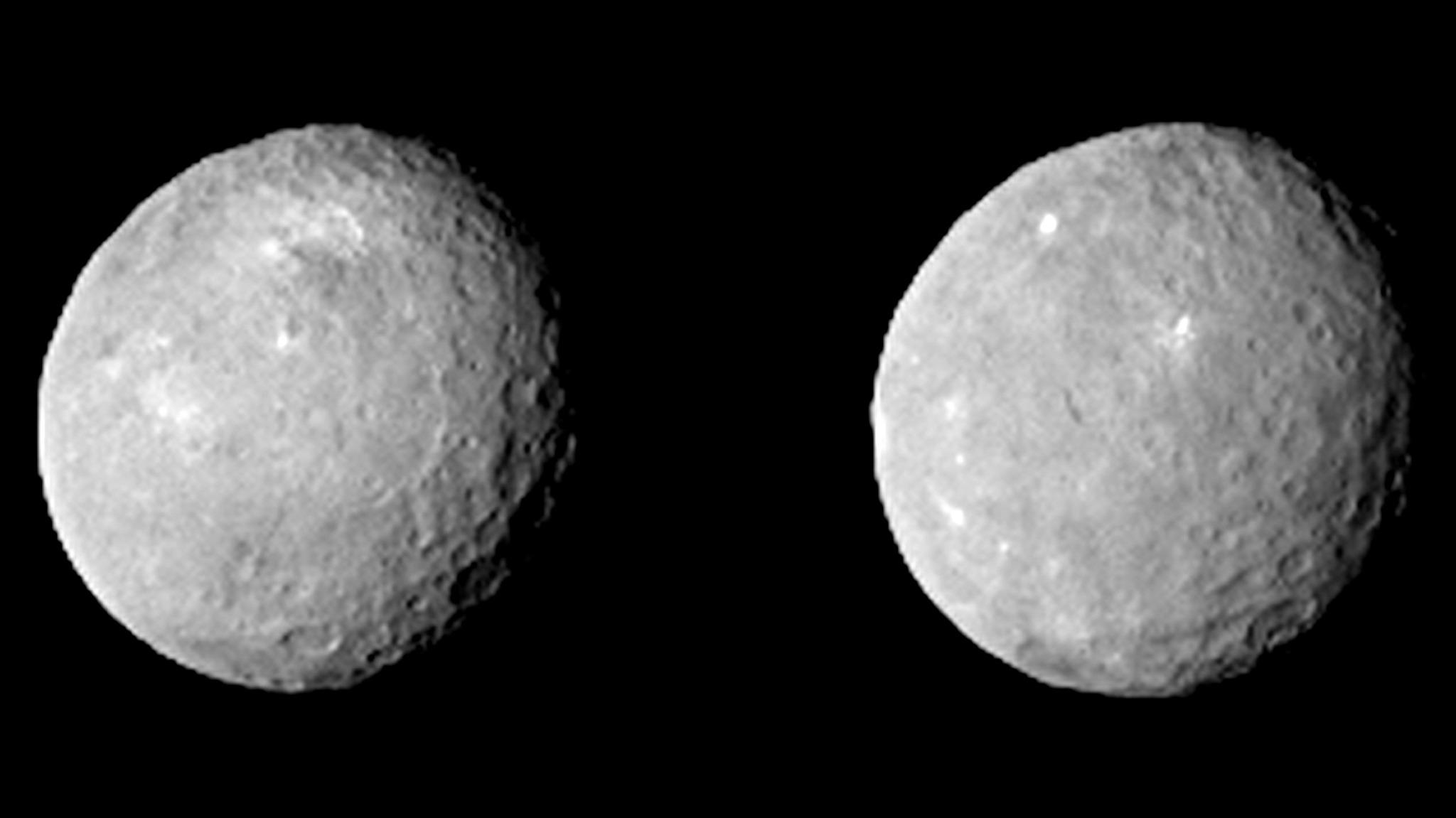Dafuq we got to the moon in 3 days, what's taking so long to cover half the distance? lol
Because modern day rocket scientists ain't shiiiiiiiiit! Von Braun be spinning in his grave.
Dafuq we got to the moon in 3 days, what's taking so long to cover half the distance? lol
EDIT: Okay, looking back at Rosetta, the amount of gravity assists and encounters (even if it couldn't stop to orbit like our wonderful Dawn) is insane.
That's both because there's a slowdown ahead of capture and because Dawn will actually go past Ceres to reach the desired orbit:Dafuq we got to the moon in 3 days, what's taking so long to cover half the distance? lol

Damn Belters....
For all the bitching people give about Pluto no longer being classified as a planet, Ceres was also considered a planet for 50 years before they reclassified it as just an asteroid.
That's both because there's a slowdown ahead of capture and because Dawn will actually go past Ceres to reach the desired orbit:

RC3 is the desired orbit, and the green line is the current trajectory. Each white dot is the position of Dawn in one-day intervals, so as you can see, a lot of time is actually spent going "past Ceres and back".
Better explanation than I can give here: http://earthsky.org/space/dawn-journal-update-on-trek-from-vesta-to-ceres
Closer images have gone up, showing multiple white spots.

In-depth analysis of the new photos (though there isn't much to gleam from it): http://www.universetoday.com/118795/an-even-closer-view-of-ceres-shows-multiple-white-spots-now/
Note that Dawn is now about 145,000 km from Ceres, which is less than half the distance from the Earth to the Moon!
Only one month left until Dawn reaches Ceres' orbit, and the mysteries of the white spots and many more will be answered.
First time I discovered stoyaWtf is a cryovolcanic eruption? lol
I'm looking forward to seeing better quality pics of Ceres. Gotta find out what that white spot is!

Getting closer yet. This is from five days ago, should have better ones soon:


Can't the Hubble take pictures of it?
Can't the Hubble take pictures of it?
It can and it has. But Hubble is designed to take pictures of really, really big stuff that is really, really far away. It doesn't do so well with small stuff closer up. It comes out really blurry like the first photo in the OP.
That's why this mission to Ceres and the one to Pluto later this year are so exciting. It will be our first clear look at these dwarf planets.
Still waiting for this to finish loading...
For some reason I thought this was out past Pluto. Excited to know more about it.
That is blowing my mind right now. Incredible!Also here's Vesta, which it already stopped at. Whole thing is about 326 miles in diameter.

You are probably thinking of Eris which is out towards Pluto (well, beyond it). New horizoins will be at Pluto near sumertime. It will download pictures to earth at 1kbs. Basically like having 14.4k modems again!
Also here's Vesta, which it already stopped at. Whole thing is about 326 miles in diameter.

First pic in the OP is taken by Hubble.Can't the Hubble take pictures of it?
You are probably thinking of Eris which is out towards Pluto (well, beyond it). New horizoins will be at Pluto near sumertime. It will download pictures to earth at 1kbs. Basically like having 14.4k modems again!
It still looks big as shit to me.Amazing images. Loving this thread.
Its hard to grasp the scale of this thing...seems so small as it is without a scale comparison.

Dwarf planet Ceres continues to puzzle scientists as NASA's Dawn spacecraft gets closer to being captured into orbit around the object. The latest images from Dawn, taken nearly 29,000 miles (46,000 kilometers) from Ceres, reveal that a bright spot that stands out in previous images lies close to yet another bright area.
"Ceres' bright spot can now be seen to have a companion of lesser brightness, but apparently in the same basin. This may be pointing to a volcano-like origin of the spots, but we will have to wait for better resolution before we can make such geologic interpretations," said Chris Russell, principal investigator for the Dawn mission, based at the University of California, Los Angeles.
Using its ion propulsion system, Dawn will enter orbit around Ceres on March 6. As scientists receive better and better views of the dwarf planet over the next 16 months, they hope to gain a deeper understanding of its origin and evolution by studying its surface. The intriguing bright spots and other interesting features of this captivating world will come into sharper focus.
"The brightest spot continues to be too small to resolve with our camera, but despite its size it is brighter than anything else on Ceres. This is truly unexpected and still a mystery to us," said Andreas Nathues, lead investigator for the framing camera team at the Max Planck Institute for Solar System Research, Gottingen, Germany.
ice volcanoes exist? that sounds cool
I so hope those spots are ice volcanoes.
I hope they're cities.
When do we start hauling it to earth orbit and start mining it?
would you drink Ceresian water?
Yes.
As far as we know, earth's water is the only place where a bacteria or virus in the water could make you sick.
Amazing images. Loving this thread.
Its hard to grasp the scale of this thing...seems so small as it is without a scale comparison.
It's a highway sign pointing to the nearest galactic rest stop.
Right now Ceres' water is pure. Time for Earthlings to muck it up.
